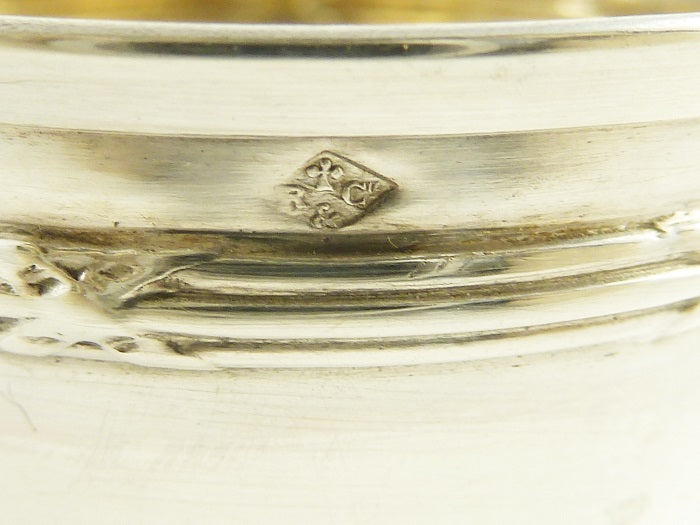
A Quick Explanation of French Silver Marks
Share
Since most French silver on the antique market today is from 1830’s and onward; I will cover those marks in this newsletter. Silver pieces prior to that date are rare. This in part is due to several historical factors including the cost of French wars and the Revolution. Louis XIV and Louis XV required all noblemen to turn in their silver as money was needed to replenish French coffers after years of wars and during the French Revolution large amounts of silver was melted down. Therefore; very little silver from the 17th and first half of the 18 centuries survived.
Exceptional quality and design are evident in French silver made between the 17th and 19th Century. I have acquired and sold a few pieces of French silver from the 1800's. One was an apple corer circa 1770. I acquired it in England and it sold quickly and went back home to France . Why would you need a sterling apple corer? Sterling silver is well-documented to have antimicrobial properties and was used by those of means both in their kitchens and for personal use when they traveled. Only the wealthy could afford having silver food service items.
The French have two standards for silver. The first is .950 (95% silver) and the second is .800 or (80% silver). In comparison English and US silver in order to be considered sterling must be .925 per 1000 parts. The other part of the alloy is 7.5% of another metal. Therefore, the French 1st standard is higher in silver content.

The number one near forehead or Minerve 1 -.950

The number two near or under the jaw or Minerve 2 - .800
From the 10th of May 1838 the French began to use Minerva mark—a profile of the Roman goddess to denote the standard of a piece of French silver . Pieces with Minerva marks bearing the number one (near the forehead) are of .950 quality and can be called sterling. The French refer to it as Minerve 1st. Titre or argent massif. Pieces with the Minerva mark and the number two (near or under the jaw) are of .800 quality and are referred to Minerve 2nd Titre.
French hallmarks are small and usually require a jeweler’s loupe to see them clearly. I use my macro lens on my camera to photograph the marks for my listings. Even when I can capture a good picture of the mark it may still be difficult to decipher it. This is due to being partially worn from polishing or wear over time. There are days when my desk looks like I collect jeweler’s loupes and reading glasses in several different strengths. If one does not work…I move to the next.
Along with the Minerve mark is maker’s punch. A diamond shaped lozenge that silversmiths use to mark their silver. Normally a combination of initials and a symbol are used. The maker’s punch is where the challenge starts and to say they are small is an understatement. Several good sites can be found on the internet for researching the maker’s marks. Sometimes it is not always possible to identify the silversmith. There were many silversmiths that were not recorded, or records of their marks are missing. 
The above pictures is of a very clear struck maker's punch. It is for Philippe Berthier,1841, Paris. His mark is “ a woodcock (the symbol)” surrounded by the letters P and B.
All photo used were taken on objects I either sold or have in stock.
There are several other marks that were used after 1838 and they are referred to as the Boar’s head mark and the Crab. They were used to denote .800 silver on small objects, and were used until 1984. Often found on small boxes, lockets, letter seals, dip pens, etc.

Above picture is of a Boar's head mark
There are marks which were used on silver items imported into France. You will not see them often; however, if you see these terms used in a description of an item you will know they indicate imports into France. These include the Mercure (head of Mercury), the Weevil and the Swan mark.
As I noted this is a quick explanation of French marks. If you are buying French silver or trying to identify French silver there are several websites on-line that offer more details. Below are links to two sites that may be helpful. Also, I highly recommend adding a copy of "International Hallmarks on Silver" by Tardy to your reference library.
Please sign up for my newsletter to receive more information regarding collecting silver and also for promotions.
To view my current French silver items please click here
2 comments
Very helpful information, I acquired a cut glass piece with bands of silver. I was able to distinguish the Minerva 1 however the other markings have me stumped. It almost resembles a Masonic stamp and what looks like a hand or fork. Some supports do have lesser purity pieces marked with the boar’s head. I still have not found those two markings anywhere. Any advice?
Thank you for your gracious & very helpful explanation of the French silver marks & additional comments. A blessed 2023 to you & your family.
In HIS rest,Richard